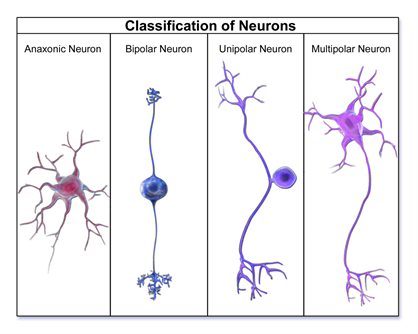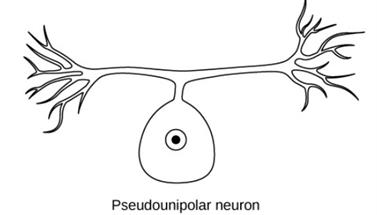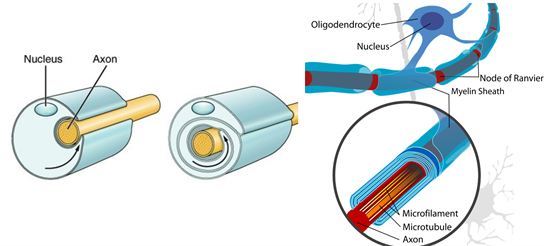PDF chapter test TRY NOW
As we studied in the previous object, the cells that make up the brain and nervous system are called neurons.
They are the basic units that send and receive impulses that help us move our muscles, sense the outside environment, think, remember, and much more.
Do you think all the neuron types are looks similar?
For example, we will look into the trees; all the trees share a basic structure such as roots, trunk, and branches but do not look the same. Similarly, the cyton, axon and dendron are basic components present in all neurons, but their structure and location will differ according to the type of neurons. So the answer is that not all neurons look similar.
Important!
The number of processes that extend out from the cell body determines the structural classification of neurons.
There are four groups of neurons based on their functional existence to the structure.
- Apolar neurons
- Unipolar neurons
- Bipolar neurons
- Multipolar neuron

Classification of neurons
1. Apolar neurons:
They do not have any polarity. Axons and dendrites are not distinguished in these fibres. All fibres are of the same kind and can carry information towards or away from the cell body.
E.g. Neurons of a hydra.
E.g. Neurons of a hydra.
2. Unipolar neurons:
Cyton gives rise to only one nerve process, which acts as both axon and dendron. The flow of information is unidirectional. These are sensory neurons. They can be found in invertebrate and vertebrate embryos but not in adults.
3. Bipolar neurons:
In bipolar neurons, cyton gives rise two nerve processes with one dendron and one axon at opposite poles. These neurons have a unidirectional information flow. They can be found in the retina of the eyes, as well as the olfactory epithelium.
4. Multipolar neuron:
One axon extends from the cell body and then splits into two in a pseudo unipolar neuron. E.g. Dorsal root of ganglion.

Pseudo unipolar neuron
Types of axons:
Axon forms nerve fibres, and they are of two types.- Myelinated nerve fibres
- Non-myelinated nerve fibres
1. Myelinated nerve fibres:
Schwann cells envelop myelinated nerve fibres, forming the myelin sheath around the axon. The nodes of Ranvier are the spaces between two neighbouring myelin sheaths. These fibres are present in the spinal and cranial nerves.
2. Non-myelinated nerve fibres:
A Schwann cell that does not form a myelin sheath around the axon surrounds a non-myelinated nerve fibre. There are no Ranvier nodes. These fibres can be found in both the autonomic and somatic nervous systems.
Important!
Myelinated and non-myelinated nerve fibres form the white matter and grey matter of the brain respectively.

Reference:
https://commons.wikimedia.org/wiki/File:Neuron_Classification.png
https://commons.wikimedia.org/wiki/File:Figure_35_01_04.jpg
https://en.wikipedia.org/wiki/Myelin#/media/File:Neuron_with_oligodendrocyte_and_myelin_sheath.svg
https://upload.wikimedia.org/wikipedia/commons/f/f8/1211_Myelinated_Neuron.jpg
